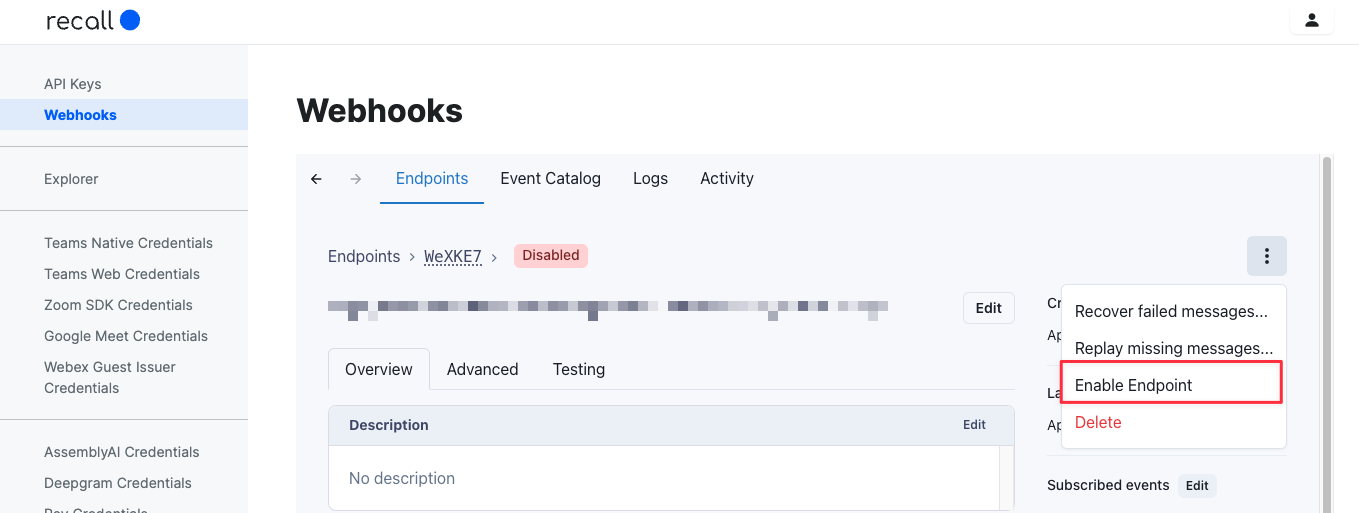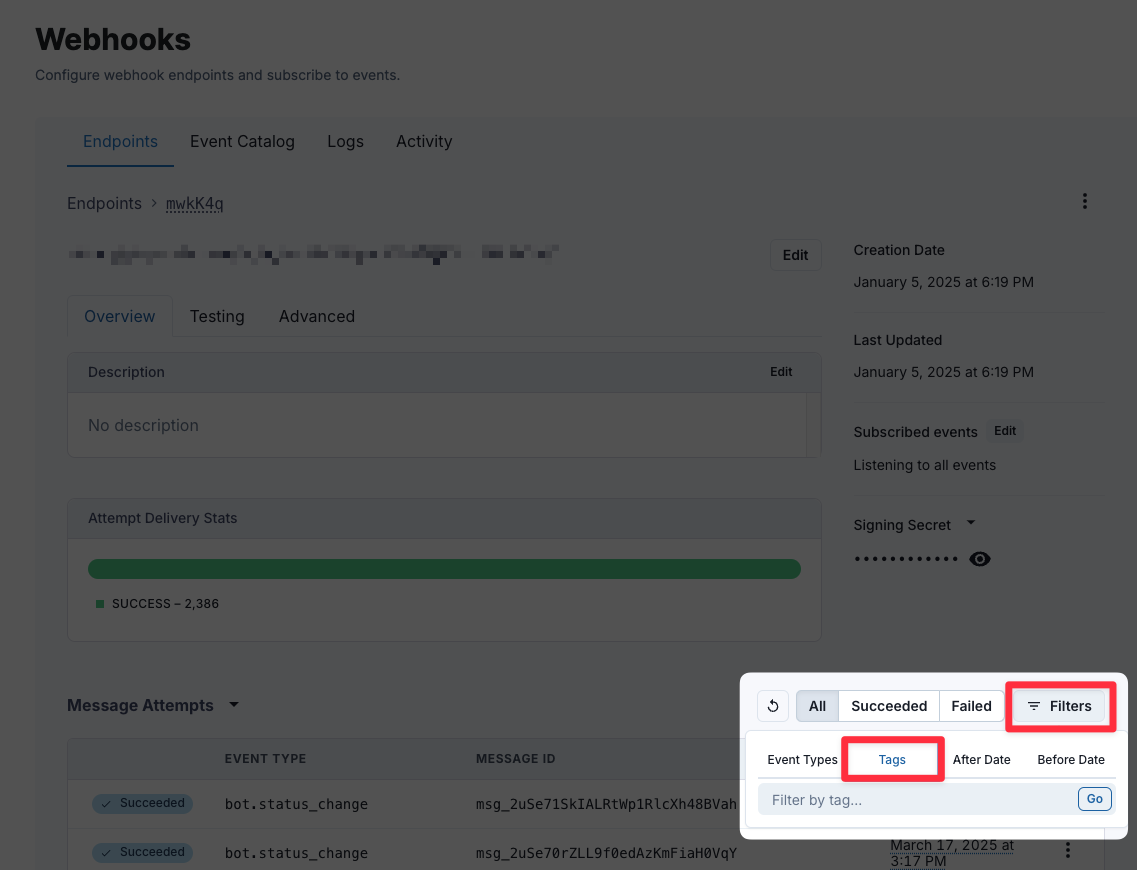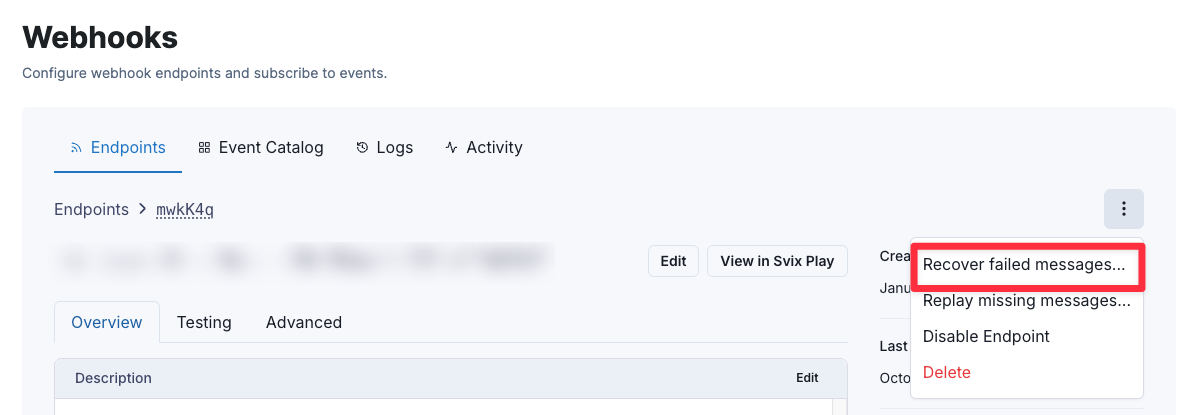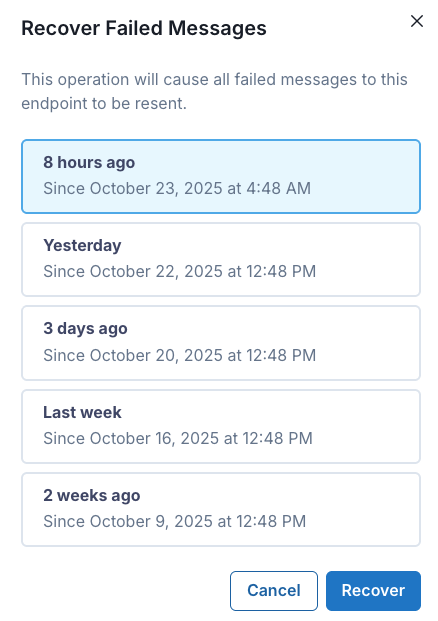FAQs: Webhooks
Frequently asked questions about Recall.ai status change webhooks
1. How are webhooks retried?
Bot status change webhooks are sent via Svix and follow their retry schedule:
Each message is attempted based on the following schedule, where each period is started following the failure of the preceding attempt:
- Immediately
- 5 seconds
- 5 minutes
- 30 minutes
- 2 hours
- 5 hours
- 10 hours
- 10 hours (in addition to the previous)
If an endpoint is removed or disabled delivery attempts to the endpoint will be disabled as well.
For example, an attempt that fails three times before eventually succeeding will be delivered roughly 35 minutes and 5 seconds following the first attempt.
This retry schedule only applies to webhooks sent through svix, and does not include Real-Time Webhook Endpoints.
2. Why was my endpoint automatically disabled?
If all webhooks sent to a particular endpoint fail for 5 days, the endpoint will be automatically disabled. Endpoints can be re-enabled in the webhooks dashboard.

Re-enabling a webhook endpoint
More details can be found in the Svix documentation.
3. How do I filter webhooks for a specific bot?
While the Webhook Message Viewer doesn't currently support filtering by specific bot statuses like "done", you can filter messages for a particular bot using the tag system. This method allows you to view all status change events for a specific bot.
Steps to Filter Messages by Bot ID:
Open the Recall.ai webhooks dashboard
View the webhooks dashboard
Locate the filter or tag input field:

Enter the tag in the following format:bot.id-{BOT_ID}
Example:bot.id-8ef3d462-bdcd-44dc-9d5a-af244449a209
Apply the filter and this will display all webhook events for the specified bot.
4. What IP addresses are webhooks sent from?
You may want to whitelist IP addresses for webhook delivery depending on your security requirements.
A list of IP addresses to whitelist can be found in the Svix's documentation here: Static source IP Addresses (EU)
The above whitelist does not apply to data delivered through Real-Time Endpoints, which are not sent from static IP's.
5. How do I replay failed svix webhooks?
Sometimes your webhook endpoint may not be responding to webhooks properly, due to an accidental code, cloud provider downtime, etc.In this case, it can be helpful to replay failed webhook attempts.
You can do this by going to the Webhooks page in the Recall.ai dashboard, selecting your webhook endpoint, and clicking Recover failed messages:

From there, you can select the time window for which you want to replay failed messages for:

6. Are custom query parameters passed through the svix webhook URLs?
Yes! You can pass through custom webhook parameters via the svix webhook URL. For example, you can set a custom query param for each workspace like the following:
?env=dev?env=staging?env=production
You will then receive this query param when receiving svix webhook events for you to refer to.
7. Will the webhook response every change?
No, you should not expect the webhook response to change under any conditions. Recall will not push breaking changes and are committed to supporting every version of the API forever. If you have any concerns about this or are seeing issues otherwise, reach out to [email protected]
Updated 6 days ago